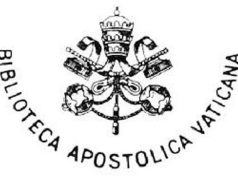Rome – Progress is painfully slow, the cost exorbitant, the reward immense: the ongoing effort to digitize the Vatican Library is putting at your fingertips the world’s most spectacular collection of antique books.
Founded in 1451, the prized holdings of the pope’s library include an illustrated copy of Vergil’s Aeneid made 1,600 years ago, known as the Vatican Virgil, as well as the oldest known written booklet of the Gospel of Luke and pages of the Divine Comedy illustrated by Botticelli.
“There may be bigger libraries, but I can safely say, given how many invaluable works are stored here, that this is the most important library in the world,” Antonio Massari, an Italian executive with Japanese IT giant NTT Data, tells dpa.
Vatican scanning – A Vatican technician scans an ancient document with her high-powered document scanner at the Vatican Apostolic Library. (File photo, December 16, 2013. Photo credit: Vatican Apostolic Library / dpa)
Some gems have already been put online, including the most famous Greek mathematical manuscript in the world, the Vatican Euclid. But according to Massari, the library’s archives are a real treasure trove that may offer some big surprises.
“In fact, we don’t know what is inside nearly 80 per cent of the manuscript books in there,” he said. “Many come from donations made to the pope by noble Roman families centuries ago, and are not sufficiently catalogued for us to know their content.”
“Could we one day find the manuscript that rewrites history? It is a possibility, although it has not happened so far,” Massari says with a wry smile.
The 53-year-old engineer coordinates the Italian team of 25 tasked with scanning old books page by page to make them accessible online to a worldwide audience of academics and bibliophiles.
A total of 50 people, including professionals from Japan, are working on the project, which NTT Data is funding with 18 million euros (20 million dollars).
“If money was no object, we could feasibly scale up operations by a factor of five,” Massari says. “Beyond that, we would probably not find enough experts with the right skills to supervise and carry out the project.”
Each manuscript takes at least a week, sometimes a month, to be processed. Vatican archivists set the priorities, deciding which texts should go first and which should be completely excluded from digitization because they are too fragile to be even opened.
Once extracted from library vaults, a manuscript is sent to a lab where restorers prepare it for scanning. Capturing the images takes 60 to 90 seconds per page, so a typical 500-page manuscript is done in a couple of days.
A “tutor” then steps in, Massari explains, to check important details – Is the colour rendition good? Are any pages upside down, or worse, have they been missed? Have the annotations in the margins, left by scholars over the centuries, all been picked up?
Once the quality control is passed, restorers do another check up before the manuscript is sent back into storage, hopefully for good. If academics can get top-quality images online, there should be “zero, or almost zero need” to bring them out again, Massari says.
In a near future, the Vatican’s rare books may become accessible even on tablets and smartphones, although it is hard to imagine that the ordinary public would be able to decipher handwriting in medieval Latin or Greek.
Massari says special attention was paid to long-term storage issues, with the adoption of FITS technology – a file format developed by US space agency NASA that should remain compatible with different image-reading software even decades on from now.
The Vatican first announced in 2010 it would have its library digitized, but got off to a false start. NTT Data took over the task in 2014 to promote its digitization technology and highlight the historical links between Japan and the Vatican.
“We are honored to taking part in this huge project that will preserve the worldwide cultural human heritage inside the Vatican Apostolic Library,” the chief executive of NTT Data Italia, Walter Ruffinoni, says.
“We kicked off the project with a letter to Pope Paul V dated 1631 from one of the biggest feudal lords in Japan that was brought to Rome by a samurai called Hasekura Tsunenaga. This letter is kept in the Vatican Library and it is now digitally preserved.”
More than 5,000 manuscripts have been digitized so far, including about 1,800 by NTT Data, which has committed to go as far as 3,000 by 2019. There are 82,000 manuscripts in total, so at the current rate, putting them all online would take more than 100 years.
For those willing to support the process, a fund-raising campaign is under way, and a recent deal with Canon provides a sweetener: the first 200 to donate at least 500 euros will receive a high-quality copy of an illustrated page from the library’s prized possession, the Vatican Virgil.
– dpa










